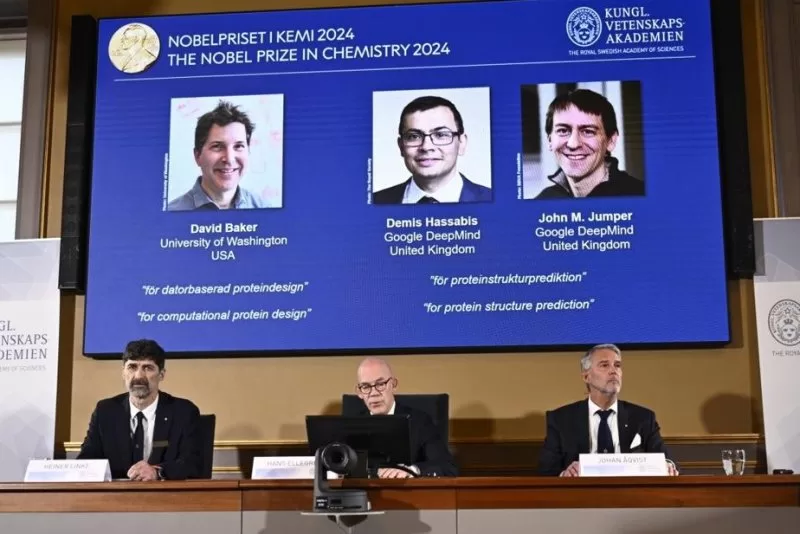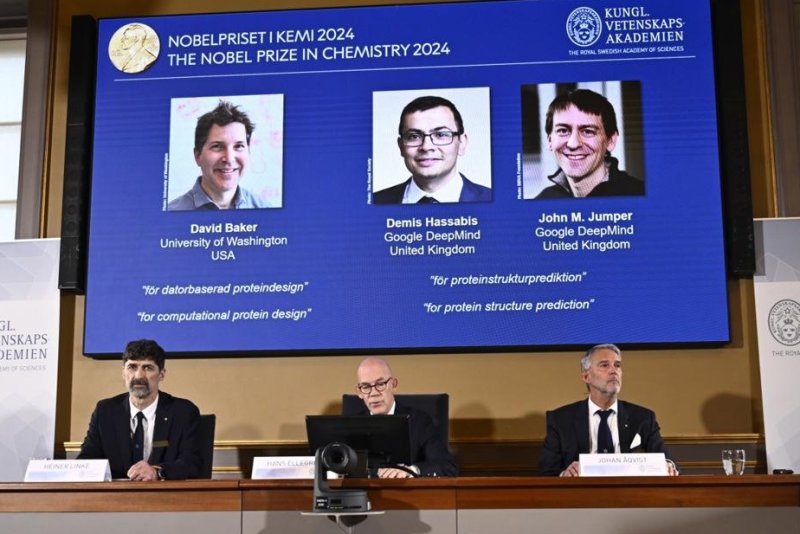(L-R) Chairman of the Nobel Committee for Chemistry Heiner Linke, Secretary General of the Royal Swedish Academy of Sciences Hans Ellegren, and member of the Nobel Committee for Chemistry Johan Aqvist announce the winners of the 2024 Nobel Prize in Chemistry, at the Royal Swedish Academy in Stockholm, Sweden, on Wednesday, to David Baker, Demis Hassabis, John M Jumper. Photo by Christine Olsson/EPA-EFE
Oct. 9 (UPI) — The Nobel Prize for chemistry was awarded to American David Baker along with Brits Demis Hassabis and John M. Jumper for separate work in unraveling the mystery of the complex structures of protein, the Nobel committee announced on Wednesday.
Baker, of the University of Washington and the Howard Hughes Medical Institute, was awarded for the computation of protein design. Hasabis and Jumper, both of Google DeepMind, were able to create an artificial intelligence model to help predict the structure of protein sequences.
The committee said Baker for the first time designed new proteins from amino acids that today are being used in pharmaceuticals, vaccines, nanomaterials and tiny sensors.
“One of the discoveries being recognized this year concerns the construction of spectacular proteins,” the Nobel Committee for Chemistry said in a statement. “The other is about fulfilling a 50-year-old dream: predicting protein structures from their amino acid sequences. Both of these discoveries open up vast possibilities.”
The committee said the predicting of protein structures long proved problematic for researchers.
“In proteins, amino acids are linked together in long strings that fold up to make a three-dimensional structure, which is decisive for the protein’s function,” the committee said.
“Since the 1970s, researchers had tried to predict structures from amino acid sequences but this was notoriously difficult. However, four years ago, there was a stunning breakthrough.”
That’s when Hassabis and Jumper developed their AlphaFold2 AI model that led to the prediction of the protein structures for all 200 million proteins that researchers have identified. Since then, the model has been used by two million people from 190 countries.

